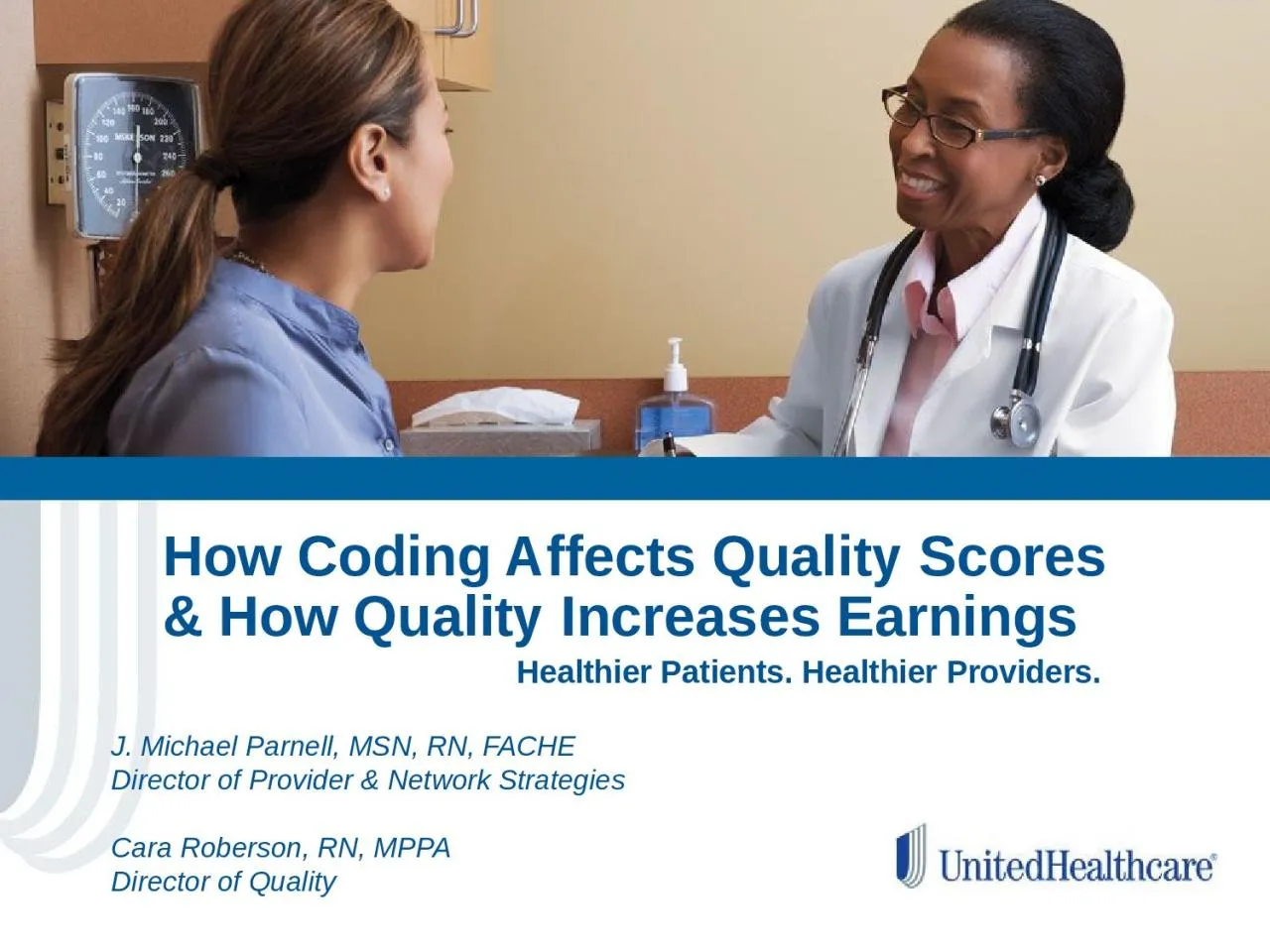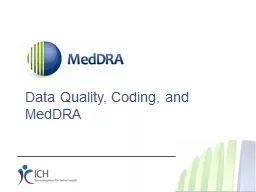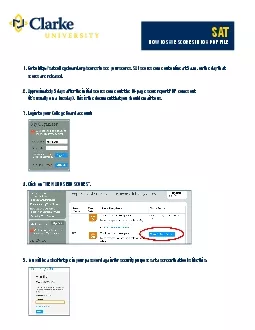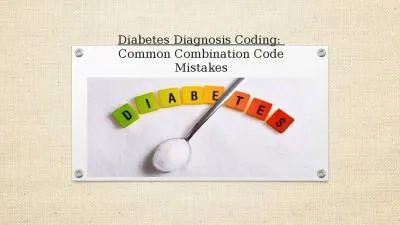PPT-How Coding Affects Quality Scores & How Quality Increases Earnings
Author : candy | Published Date : 2022-06-01
Healthier Patients Healthier Providers J Michael Parnell MSN RN FACHE Director of Provider amp Network Strategies Cara Roberson RN MPPA Director of Quality
Presentation Embed Code
Download Presentation
Download Presentation The PPT/PDF document "How Coding Affects Quality Scores &..." is the property of its rightful owner. Permission is granted to download and print the materials on this website for personal, non-commercial use only, and to display it on your personal computer provided you do not modify the materials and that you retain all copyright notices contained in the materials. By downloading content from our website, you accept the terms of this agreement.
How Coding Affects Quality Scores & How Quality Increases Earnings: Transcript
Download Rules Of Document
"How Coding Affects Quality Scores & How Quality Increases Earnings"The content belongs to its owner. You may download and print it for personal use, without modification, and keep all copyright notices. By downloading, you agree to these terms.
Related Documents














